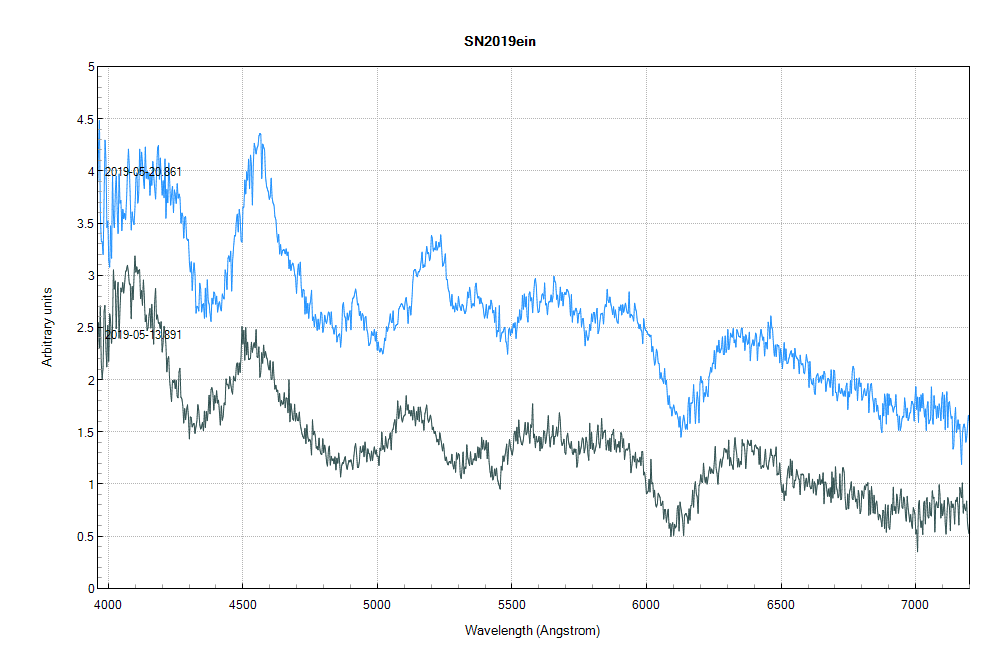Hi Daniel
Daniel Dejean wrote:@ Robin, Yes... a few...

2, 3 or 5... that is the question... By the way, and despite your early warning, I am very surprised by the fact the AAVSO group has been very late to react compared to previous objects of same magnitude. As far as I can see, there is only 2 data point available at present time :
https://www.aavso.org/apps/webobs/resul ... SN+2019EIN .
May be I am making the right query. Any other explanation ?
To predict the date at maximum and the related magnitude I am trying to use a kind of best fitting curve based on actual measurement 10 to 15 days before max. An other method could be to directly estimate the max magnitude based on distance. However it is my understanding that more complex factor, like intersellar instection, could impact this magitude/distance relation. Any advise ?
Yes extinction affects the maximum brightness. We know what this is for our galaxy but the extinction in the host galaxy is unknown and must be measured from the spectrum. The continuum shape gives a clue (It is blue in this case so there is no obvious evidence of high extinction) but also the extinction can be measured from IS absorption lines (probably not at the resolution of our spectra though). Type Ia supernovae also actually vary a bit in absolute brightness (They are not perfect "candles". This is corrected for by measuring the rate of decline after maximum.
I know how fast the brightness drops after maximum varies between type Ia supernovae but I am not sure about the rate of rise before maximum. You might find these papers on sn2018oh interesting. This was also a type Ia discovered early (I officially classified it first

). There was a very good early light curve from Kepler and these papers show the fit to the rising light curve
https://arxiv.org/abs/1811.10061
https://arxiv.org/abs/1811.10056
Professionals use a software tool called SNooPY to model supernovae light curves but I have not tried it
http://ascl.net/1505.023
Cheers
Robin




